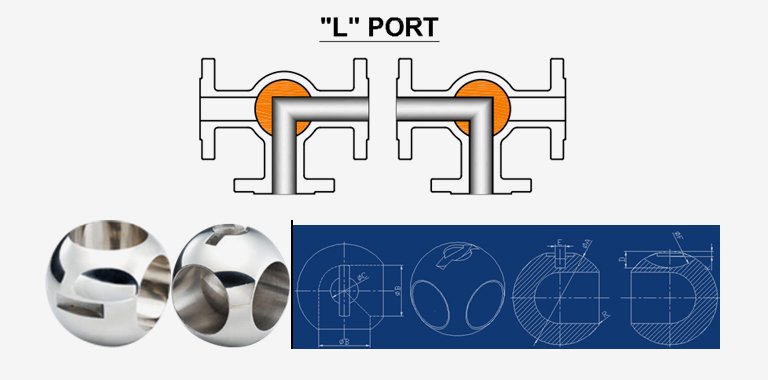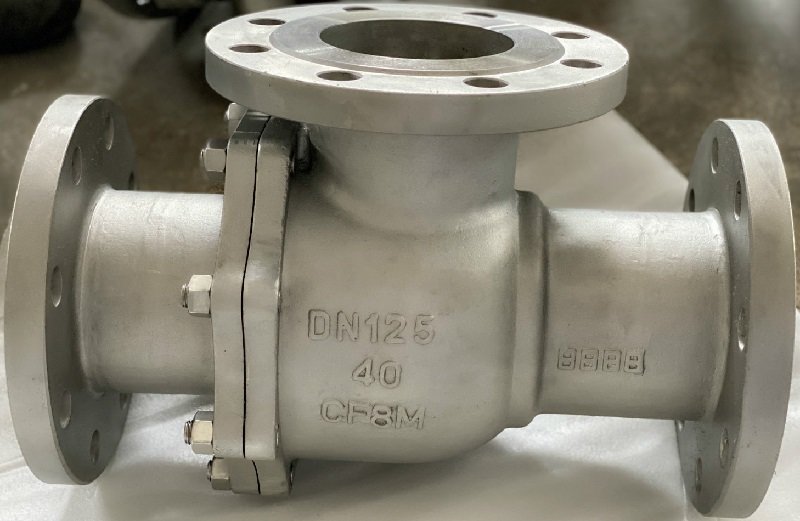In a 3-way ball valve, the ball has three ports: an inlet port, an outlet port, and a common port. By rotating the ball, you can align the bore with different combinations of ports, which determines the flow path.
When the bore is aligned with the inlet port and the common port, the fluid or gas can flow freely from the inlet to the common port. Similarly, when the bore is aligned with the common port and the outlet port, the flow is redirected from the common port to the outlet.
The third position is where things get interesting. When the bore is aligned with both the inlet and outlet ports simultaneously, it creates a flow path between these two ports, bypassing the common port. This allows fluid or gas to flow directly from the inlet to the outlet port without passing through the common port.
By rotating the ball, you can switch between these three flow paths, giving you control over the direction and diversion of the fluid or gas. This versatility makes 3-way ball valves suitable for various applications where you need to control the flow direction, mixing, or diverting of fluids or gases.
 There are several different types of 3-way ball valves, each designed for specific applications. Here are two common types:
There are several different types of 3-way ball valves, each designed for specific applications. Here are two common types:1. L-Port 3-way ball valve: This type of valve has an L-shaped bore, with one inlet and two outlets. It allows flow to be diverted between two different directions, typically used for mixing or diverting fluids.
- To divert flow from one source to a secondary source
- Switching between one pump and a separate pump
- Diverting from free cooling to a chiller
- Diverting flow between two storage tanks

2. T-Port 3-way ball valve: This valve has a T-shaped bore, with one inlet and two outlets. It allows flow to be directed between all three ports, often used for applications requiring multiple flow paths or blending different fluids.
- Flow straight through the valve when it’s in one position with less pressure loss, and then divert to another direction in another position
- Using one or two paint sprayers simultaneously when all three ports are connected
 When determining whether you need a T-port or L-port ball valve, you generally consider the flow direction and the specific requirements of your application.
When determining whether you need a T-port or L-port ball valve, you generally consider the flow direction and the specific requirements of your application. T-port and L-port refer to the different configurations of the ball inside the valve. In a T-port ball valve, the ball has a "T" shaped bore, while in an L-port ball valve, the bore resembles an "L" shape.
If you require a valve that allows flow in multiple directions, such as diverting or mixing flows, a T-port ball valve is typically suitable. The T-shaped bore allows flow through the valve in three different directions, creating various flow patterns.
On the other hand, if you need a valve that offers more straightforward flow control, an L-port ball valve may be more appropriate. The L-shaped bore in this valve allows flow in two different directions, typically used for either on/off applications or for controlling flow between two different outlets.
Ultimately, the choice between T-port and L-port ball valves depends on the specific needs of your system or process. It's essential to consider factors such as flow requirements, pressure, temperature, and the intended purpose of the valve to determine which configuration will work best for you.
A 3-way ball valve is a type of valve that has three ports or openings, which allows it to control the flow of a fluid or gas in multiple directions. Its main function is to divert the flow of the medium between two different paths or to mix two different streams together.
Here are the primary functions of a 3-way ball valve:
1. Diverting Flow: One of the main functions of a 3-way ball valve is to divert the flow of a fluid or gas between two different paths. It can be used to direct the flow from one inlet to two different outlets or vice versa.
2. Mixing Flow: Another function is to mix two different streams of fluid or gas together. By adjusting the position of the valve, you can control the proportion of each stream that is combined.
3. Shutting Off Flow: Like any other valve, a 3-way ball valve can also be used to completely shut off the flow of the medium. By rotating the ball inside the valve, the flow passages can be blocked, preventing any fluid or gas from passing through.
These functions make 3-way ball valves versatile and suitable for various applications, including industrial processes, plumbing systems, and HVAC (heating, ventilation, and air conditioning) systems.

